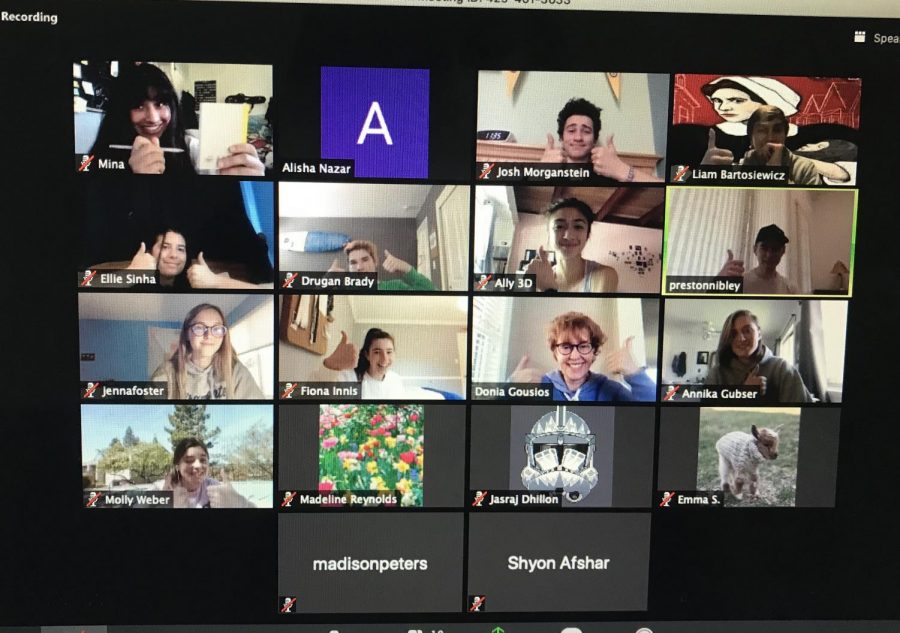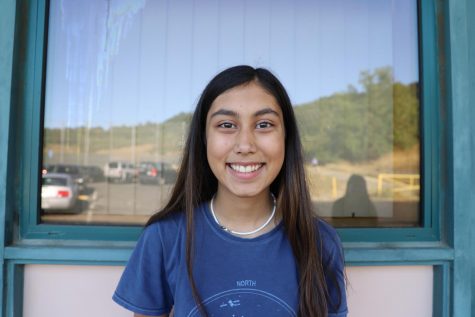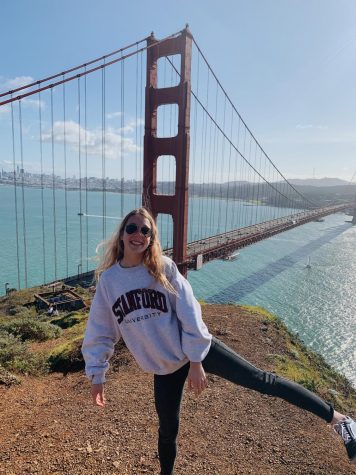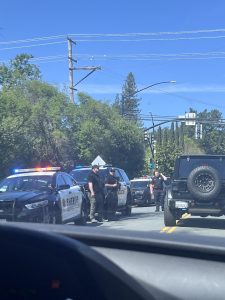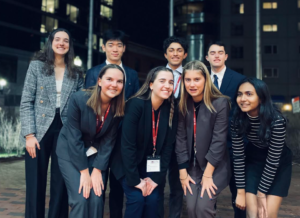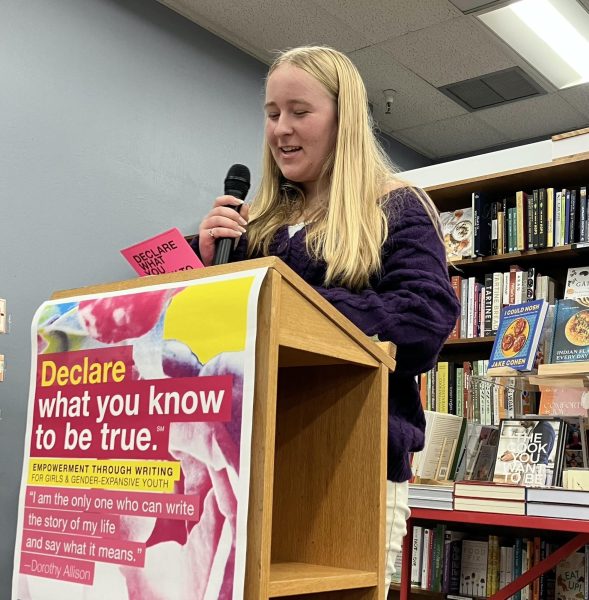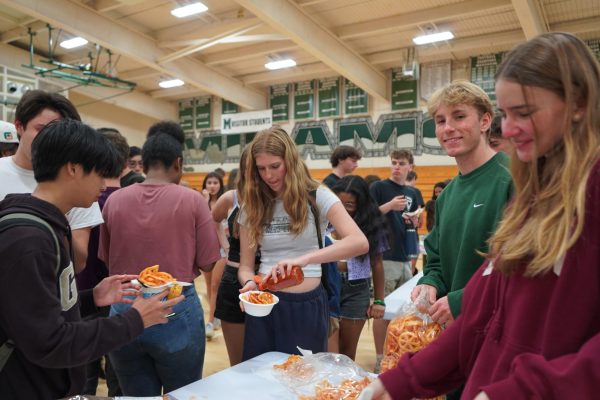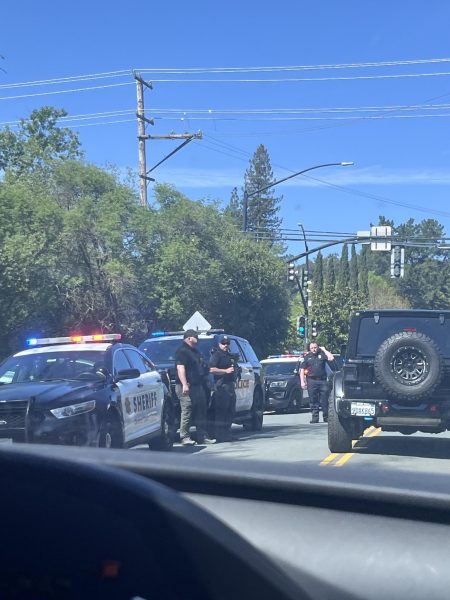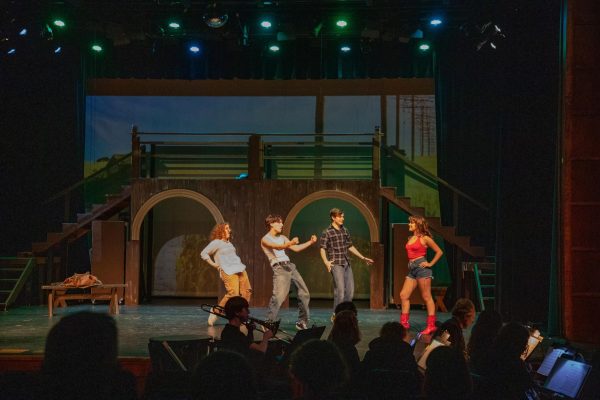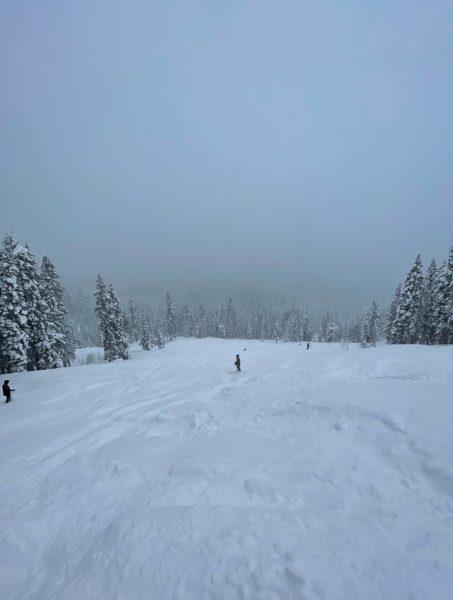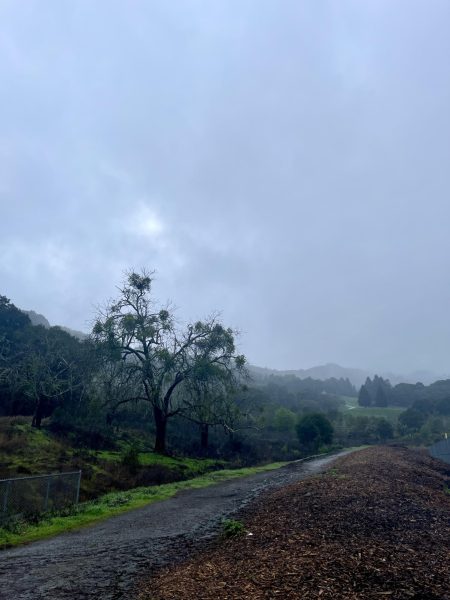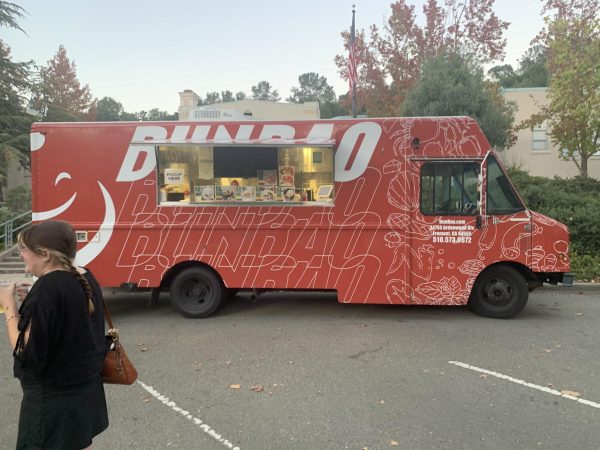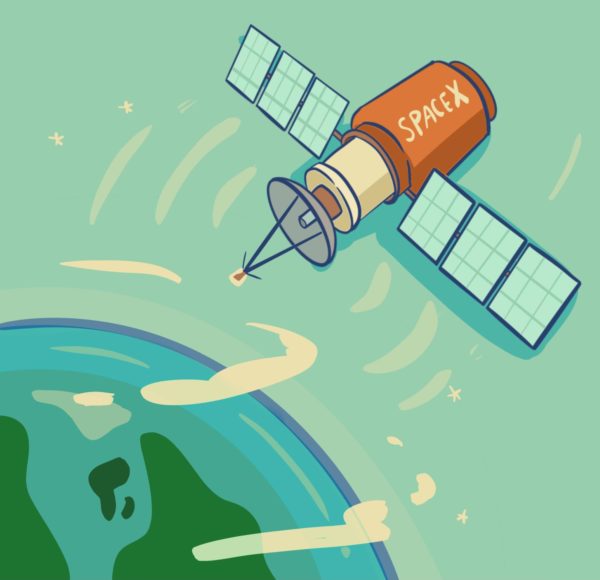Teachers Working Hard to Adapt to Online School
April 22, 2020
The bell rings and you pick up your bag, heading off to your next period. You take a seat in the small, cramped desk. As your teacher rambles on to another lecture, your eyes drift across the room, intensely studying the intricacies of the classroom or the ticking of the clock. The little things that often go unnoticed: the presence of the classroom environment, sharing ideas in discussions, and being in a physical presence with your peers and teachers is something that shouldn’t be taken for granted. You never know when it can be taken away, and your whole school experience and routine disappears.
March 13, the Acalanes Union High School District (AUHSD) closed their schools and started “distance learning” online school due to concerns about the spread of COVID-19. As the community adjusted to shelter-in-place isolation at home, the teachers had to quickly adapt to a completely different learning style unprecedented at the Miramonte campus.
Students are expected to have two to three hours of coursework per class each week, without distinction between classwork and homework. According to the AUHSD “Distance Learning Guidelines” published on March 23: “Considering the challenges that come with distance learning, lack of classroom instruction and the rapid shift to this model, teachers have been asked to focus on teaching the essential skills and standards that are critical for student success in subsequent courses.”
Teachers are taking different approaches to online learning in order to continue to prepare students for the next school year, while following the district curriculum guidelines and state standards. In addition to posting School Loop assignments, methods that teachers are currently using to implement curriculum are Zoom for face-to-face class time, Google Classroom for assignments, Screencastify for video lectures, and more. “In a couple of ways, Zoom is even more effective than regular classroom instruction. With it, I like the fact that I can get, as it were, face to face with individual students over the course of, say, a class discussion, and yet I can also nimbly move among several individuals to enlist their participation with the speed of mouse click,” English teacher Ed Simmons said.
Many teachers hold Zoom meetings during their usual class hours, and others provide optional Zooms for extra help if needed. “I’ve come to realize that less is more. That is, I don’t need to conduct hour and a half long Zoom sessions to assure myself that students are learning. I do need to plan my sessions in ways that transform the role of each participant from passive to active. I also need to imbed in each session small, frequent and measured standards of accountability that say to all, we’re still about the work,” Simmons said.
Classes in the language department are heavily reliant on peer interaction and present speaking, and distance learning has presented a challenge. “It means so much more to be in the classroom and as a teacher. I don’t think that you can rely on that, even though I am connected with you, we are not physically connected. I feel the heaviness of that. And in our classes, I think it’s going to hurt because you are not hearing each other speak, bouncing ideas off each other, talking to each other. My answer is not positive and uplifting, but it’s challenging,” Spanish teacher Sarah Frank said.
In the science department, Physics of the Universe teachers Tiffany Palmberg and Riki Sorenson chose to continue with Google Classroom assignments that their students were already familiar with. They also publish videos of usual in-class slides with interactive questions and update a summative Google Doc with an organized lesson plan, links, and assignments for the day. “One downside from this first week is the amount of screentime students end up having. At the end of the first week, I felt like I had been on my computer all day every day to give feedback, and I’m sure students are seeing an increase in online assignments. I am hoping to figure out some labs that are hands-on or creative, so students have a break from screen time,” Palmberg said. “Our labs will instead have a focus of learning to analyze given data, rather than collecting data. We also are coming up with labs where students already have the materials at home.”
Students continue to excel in their courses amid the drastic adaptations to online school. In the first week of distance learning, Frank posted a question on Google Classroom for her Spanish 3 and 4 Honors students to respond in a recorded video. “When I was watching the videos, I felt so moved, their accents were so beautiful. And we have spent a lot of time on this. It was such high level Spanish. I can hear it in [my students], [they] are becoming bilingual. And that was so inspiring to me. And I was like, I think I needed that, I needed to hear that. I am very proud,” Frank said.
The changes may seem confusing and stressful, but some positives are emerging from the distance learning transition. “My goal is to still connect with the students, I miss greeting everyone at the door. But I do like that students can do work at any time of the day. Students really have the flexibility of making their own schedule, which the majority are using responsibly,” Palmberg said.
The world and the severity of the concerns about COVID-19 seem to be changing every day, throwing society into a huge whirlwind. Teachers are adapting to the “new normal” and are keeping their students’ best interests in mind while teaching from a distance. “They’re doing the best they can, by scheduling either Zoom meetings or assigning us work on Google Classroom. They’re usually very flexible and understand this is a big transition,” junior Sara Persson said.

